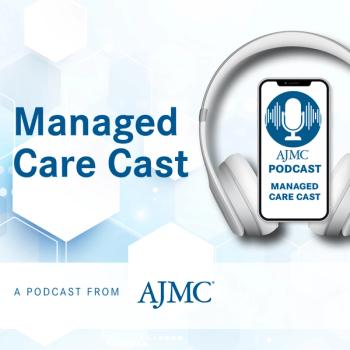
EHA Plenary Abstracts Zoom in From Investigational Drugs to Molecular Signatures
Key Takeaways
- JNJ-5332, a trispecific antibody, showed promising efficacy in relapsed/refractory multiple myeloma, with a 70.4% complete response rate in BCMA/GPRC5D-naïve patients.
- Polatuzumab vedotin in the POLARGO trial demonstrated a 40% reduction in death risk for relapsed/refractory diffuse large B-cell lymphoma, offering a potential new standard of care.
Abstracts presented during the plenary session of the 2025 European Hematology Association (EHA) Congress spanned from novel drug regimens for myeloma and lymphoma to investigation of leukemias on the molecular and genetic levels.
Research on the molecular and genetic levels is driving the advances in clinical therapy for hematologic disorders, according to remarks by plenary session chair Martin Dreyling, MD, of LMU Hospital Munich, during the
Clinical Trial Results in MM, DLBCL, and ET
The first half of the session featured results from trials investigating therapeutic agents for an array of hematological diseases. Rakesh Popat, MBBS, PhD, of University College London, began by presenting initial
As Popat explained, the objective of this early study was to identify a recommended phase 2 dose via escalation and optimization, and the investigators landed on 100 mg subcutaneously every 4 weeks. They also noted a manageable adverse effect profile, with hematological toxicities occurring as expected. However, prophylactic tocilizumab reduced the incidence and severity of cytokine release syndrome, which Popat said “underpins our ability to use this as an outpatient strategy.”
In terms of efficacy, 70.4% of BCMA/GPRC5D-naïve patients receiving the recommended dose achieved at least a complete response, and Popat characterized the overall response rate results as comparable to those seen with chimeric antigen receptor (CAR) T-cell therapy but with this off-the-shelf, outpatient-administered agent. These results were also presented at the American Society of Clinical Oncology meeting earlier this month.
Next to present was Matthew Matasar, MD, of Rutgers Cancer Institute in New Jersey, who delivered results of the
Topline results showed a stratified HR of 0.60 (95% CI, 0.43-0.83; P = .0017) for the primary overall survival end point, indicating a 40% reduction in risk of death in the Pola-R-GemOx arm vs those receiving R-GemOx alone. However, those receiving polatuzumab vedotin did stay on treatment for a greater number of cycles, which provoked increased toxicity, including peripheral neuropathy.
Matasar described these results as encouraging for showing the potential of polatuzumab vedotin in allowing patients to avoid bendamustine. “We do have a broadening armamentarium for treatment of relapsed or refractory [DLBCL], and it’s good to have the tools,” he concluded, adding that he sees a possible role for this regimen in helping patients bridge to CAR T therapy.
In an interview with The American Journal of Managed Care®, Matasar gave further context that “the treatment program, in its ability to improve overall survival, really does move the needle in an important way. For countries that are already heavily using CAR T-cell therapy and bispecific therapy, the POLARGO program adds to an increasingly varied armamentarium in this context. For countries where reimbursement for CAR T or bispecific antibodies is more limited, polatuzumab-based treatment may be all the more attractive, and POLARGO has the potential to be a new standard of care in such contexts.”
The next abstract was presented by Harry Gill, MD, of the University of Hong Kong, who delivered results from the
The trial met its primary end point of modified European LeukemiaNet response rate (42.9% for ropeg vs 6.0% for anagrelide; P = .0001), and the achievement of at least partial molecular response by 30.6% of the ropeg arm and no patients in the anagrelide arm led Gill to hope that this new therapeutic option could have disease-modifying potential.
To wrap up the clinical trial section of the plenary, David Curtis, MBBS, PhD, of Monash University in Melbourne, Australia, presented findings from
Curtis expressed optimism that the new regimen could be “simple, cheap, but practice-changing,” and in a press briefing prior to the presentation said that these data could be the “nail in the coffin” for standard prophylaxis.
Molecular Investigations in CLL and AML
According to session chair Dreyling, the following presentations exemplified the molecular research that is driving these clinical advances. For instance, Ian Márquez-López of Hospital Clinic Barcelona presented insights into the genesis of
“CLL clones seem to arise from distinct cells of origin,” Márquez-López said, “and start to expand decades before diagnosis of the disease.”
To round out the plenary, Amin Turki, MD, PhD, of University Hospital Bochum in Germany, delivered findings on
This refined classification “has the potential to further personalize outcome prediction,” Turki said, especially if validated prospectively and used to complement the existing European LeukemiaNet categorization scheme.
He reminded the audience that his group, the HARMONY Alliance Foundation, is open to collaboration, which could help reveal genetic insights based on even larger data sets. Next steps for research could explore the associations among genetic signatures, treatment patterns, and outcomes.
References
1. Popat R, Touzeau C, Perrot A. First-in-human study of JNJ-79635322 (JNJ-5322), a novel, next-generation trispecific antibody, in patients with relapsed/refractory multiple myeloma: initial phase 1 results. Presented at: EHA 2025 Congress; June 14, 2025; Milan, Italy. Accessed June 14, 2025.
2. Matasar M, Li ZM, Vassilakopoulos TP, et al. Polatuzumab vedotin, rituximab, gemcitabine and oxaliplatin (Pola-R-GemOx) for relapsed/refractory (R/R) diffuse large B-cell lymphoma (DLBCL): results from the randomized phase III POLARGO trial. Presented at: EHA 2025 Congress; June 14, 2025; Milan, Italy. Accessed June 14, 2025.
3. Gill H, Masarova L, Xiao Z, et al. Better safety and efficacy with ropeginterferon alfa-2b over anagrelide as second-line treatment of essential thrombocythemia in the topline results of the randomized phase 3 SURPASS-ET trial. Presented at: EHA 2025 Congress; June 14, 2025; Milan, Italy. Accessed June 14, 2025.
4. Curtis D, Purtill D, Lewis C, et al. A phase 3 randomised trial of post-transplant cyclophosphamide for GVHD prophylaxis in matched sibling donor peripheral blood stem cell transplantation: the ALLG BM12 CAST trial. Presented at: EHA 2025 Congress; June 14, 2025; Milan, Italy. Accessed June 14, 2025.
5. Márquez-López I, Real A, Russiñol N, et al. Minor independent clones in patients with chronic lymphocytic leukemia have a CLL-biased biological signature: implications for disease ontogeny and evolution. Presented at: EHA 2025 Congress; June 14, 2025; Milan, Italy. Accessed June 14, 2025.
6. Turki A, Dall’Olio D, Carota L, et al. development and independent validation of unsupervised genomic classification of patients with acute myeloid leukemia using hierarchical Dirichlet mixture models: a HARMONY Alliance study. Presented at: EHA 2025 Congress; June 14, 2025; Milan, Italy. Accessed June 14, 2025.
Newsletter
Stay ahead of policy, cost, and value—subscribe to AJMC for expert insights at the intersection of clinical care and health economics.







































